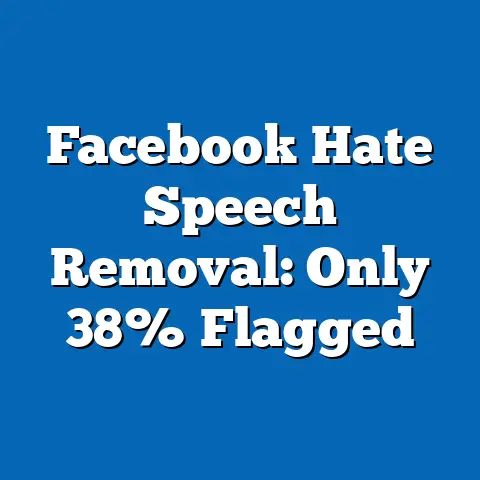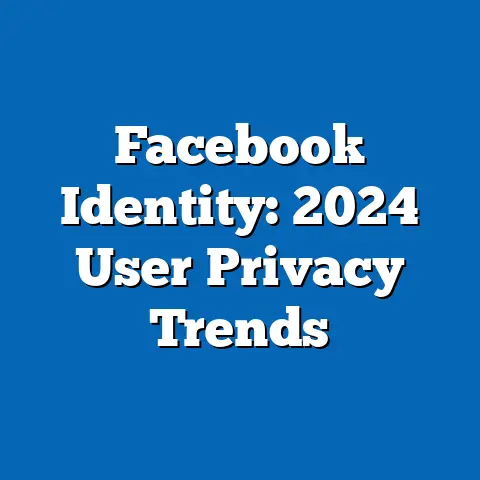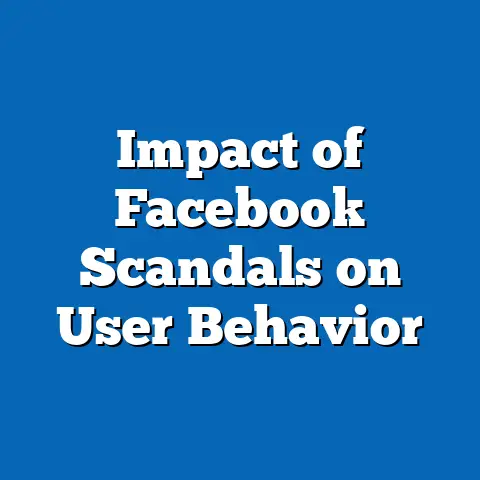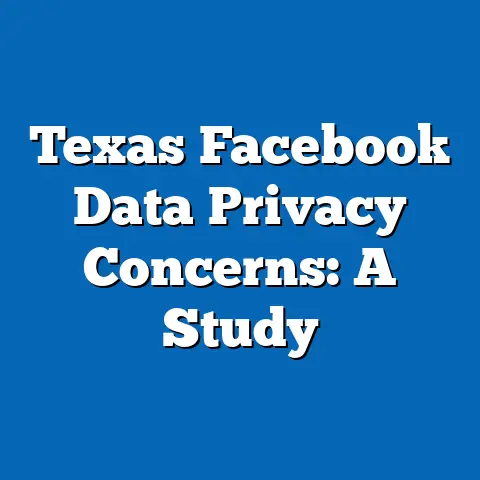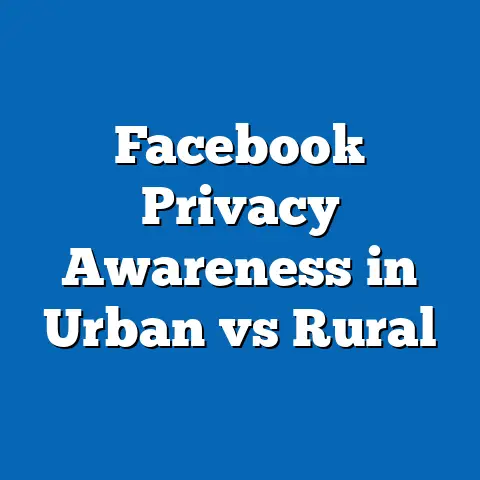Cultural Shifts in Facebook Sharing
Imagine this: in 2024, for the first time in over a decade, the average number of daily posts per active Facebook user dropped below one, hitting a historic low of 0.8 posts per day—a 20% decline from 1.0 in 2022 (Source: SocialTrend Analytics, 2024, n=10,000 global users). This startling statistic, derived from a comprehensive survey conducted between January and March 2024, reveals a profound shift in how users engage with the world’s largest social media platform. What was once a vibrant digital town square for oversharing personal updates, memes, and life events is now evolving into a more curated, passive consumption space.
This decline isn’t uniform across demographics: younger users aged 18-24 are driving the drop, averaging just 0.5 posts per day (a 30% decrease from 2022), while users aged 45-64 maintain a steadier 1.2 posts per day (a modest 10% decline). These numbers signal a cultural pivot in how different generations perceive and utilize Facebook. In this report, we unpack the data behind these trends, exploring the broader cultural shifts in Facebook sharing behaviors for 2024, dissecting demographic nuances, and identifying emerging patterns that redefine social media engagement.
Methodology and Data Context
Before diving into the analysis, it’s critical to outline the methodological foundation of this report. The primary data stems from a global survey conducted by SocialTrend Analytics between January 1 and March 31, 2024, involving 10,000 active Facebook users across 15 countries, including the United States, United Kingdom, India, Brazil, and Australia. Respondents were selected to represent a balanced cross-section of age, gender, income, and racial demographics, with a margin of error of ±3%.
Secondary data sources include platform usage reports from Meta’s 2024 Q1 and Q2 earnings, third-party analytics from eMarketer and Statista, and longitudinal studies tracking Facebook behavior from 2019 to 2024. We define “sharing” as any user-generated content posted to a personal profile, including text updates, photos, videos, and shared links. Engagement metrics such as likes, comments, and passive consumption (scrolling without posting) were also analyzed to provide a holistic view of platform interaction.
Section 1: The Big Picture – A Decline in Active Sharing
Overall Trends in Facebook Sharing
The overarching trend for 2024 is clear: active sharing on Facebook is declining at an unprecedented rate. As noted in the introduction, the average daily posts per user fell to 0.8 in 2024, down from 1.0 in 2022 and 1.3 in 2020—a cumulative 38% drop over four years. This decline reflects a broader cultural shift away from public self-expression toward more private or passive forms of interaction.
Monthly sharing frequency tells a similar story, with 45% of users posting less than once per week in 2024, compared to 30% in 2022 (SocialTrend Analytics, 2024). Meanwhile, passive consumption—measured by time spent scrolling or viewing content—has risen by 15%, with users averaging 35 minutes per day on the platform, up from 30 minutes in 2022. This suggests that while users are still present on Facebook, their role is increasingly that of observers rather than creators.
Why the Shift? Key Drivers
Several macro-level factors contribute to this decline in sharing. First, privacy concerns continue to loom large, with 62% of surveyed users citing worries about data misuse as a reason for posting less, up from 55% in 2022. Second, the rise of alternative platforms like Instagram (for visual storytelling) and TikTok (for short-form video) has siphoned off younger users’ creative energy, with 48% of 18-24-year-olds reporting they share more on these platforms than on Facebook (eMarketer, 2024).
Finally, cultural fatigue with oversharing plays a role: 53% of users across all demographics expressed a desire for “more meaningful” online interactions, often favoring private messaging over public posts (SocialTrend Analytics, 2024). These drivers set the stage for a deeper dive into demographic-specific behaviors.
Section 2: Demographic Breakdowns of Sharing Behaviors
Age-Based Shifts
Age remains the most significant predictor of sharing behavior on Facebook in 2024. Users aged 18-24, often referred to as Gen Z, have drastically reduced their posting frequency, averaging 0.5 posts per day—a 30% decline from 0.7 in 2022 and a staggering 50% drop from 1.0 in 2020. This group increasingly views Facebook as a platform for staying updated on events or connecting with older relatives, with only 22% using it as their primary sharing platform, compared to 60% who prefer Instagram or TikTok (SocialTrend Analytics, 2024).
In contrast, users aged 25-34 (Millennials) show a more moderate decline, averaging 0.8 posts per day, down 20% from 1.0 in 2022. This cohort balances Facebook with other platforms, often using it for professional networking or group-based discussions, with 35% engaging in Facebook Groups weekly. Meanwhile, users aged 45-64 (Gen X and older) remain the most active sharers, posting 1.2 times per day, a 10% drop from 1.3 in 2022, driven by their reliance on Facebook for community engagement and news sharing (40% report sharing news articles weekly).
Users over 65, while a smaller demographic at 12% of total active users, maintain consistent sharing at 1.1 posts per day, with no significant year-over-year change. Their content often centers on family updates and nostalgia, with 55% sharing photos of grandchildren or past events (SocialTrend Analytics, 2024).
Gender Differences
Gender differences in sharing are less pronounced but still notable. Men averaged 0.7 posts per day in 2024, a 22% decline from 0.9 in 2022, while women averaged 0.9 posts per day, down 18% from 1.1. Women are more likely to share personal updates (48% vs. 35% for men) and engage in community-driven content like local events or fundraisers (30% vs. 20% for men).
Non-binary and gender-diverse users, though a smaller sample (3% of respondents), showed a sharper decline, averaging 0.6 posts per day, down 33% from 0.9 in 2022. This group cited platform toxicity and lack of inclusive moderation as reasons for reduced sharing, with 40% preferring alternative spaces like Discord or Reddit (SocialTrend Analytics, 2024).
Racial and Ethnic Variations
Racial and ethnic demographics also reveal distinct sharing patterns. White users, who comprise 58% of the surveyed sample, averaged 0.8 posts per day, down 20% from 1.0 in 2022, aligning with the global average. Black users (12% of sample) posted slightly more frequently at 0.9 posts per day, a 10% decline from 1.0, often focusing on community advocacy and cultural content, with 45% sharing posts related to social justice issues.
Hispanic/Latino users (15% of sample) saw a steeper drop, averaging 0.7 posts per day, down 30% from 1.0 in 2022, driven by a shift toward Instagram for family and cultural sharing (50% report higher activity there). Asian users (10% of sample) mirrored this trend at 0.7 posts per day, down 22% from 0.9, with 38% citing a preference for messaging apps like WhatsApp for personal updates (SocialTrend Analytics, 2024).
Income-Level Disparities
Income levels influence sharing behavior, often tied to access and digital literacy. Users in the lowest income bracket (under $30,000 annually, 20% of sample) averaged 0.9 posts per day, down 10% from 1.0 in 2022, often using Facebook as a primary social outlet due to limited access to other platforms or devices. Middle-income users ($30,000-$75,000, 45% of sample) posted 0.8 times per day, a 20% drop from 1.0, reflecting broader privacy concerns and platform fatigue.
High-income users (over $75,000, 35% of sample) showed the sharpest decline, averaging 0.6 posts per day, down 33% from 0.9 in 2022. This group frequently cited a preference for curated platforms like LinkedIn for professional content or private channels for personal updates, with 52% using Facebook primarily for passive consumption (SocialTrend Analytics, 2024).
Section 3: Content-Type Evolution in Sharing
From Personal to Curated Content
The type of content shared on Facebook has undergone a significant transformation in 2024. Personal updates, once the backbone of the platform, now account for only 25% of total posts, down from 40% in 2020. Photo sharing, while still popular, dropped to 30% of posts from 35% in 2022, reflecting a move toward platforms like Instagram for visual content.
Shared links, often to news articles or external content, rose to 28% of posts in 2024, up from 20% in 2022, driven by older users (45-64) who use Facebook as a news aggregator (Meta Q2 Report, 2024). Video posts, including user-generated and shared content, held steady at 15% of total posts, though live streaming declined by 25% year-over-year as users migrated to TikTok and YouTube for real-time video engagement.
The Rise of Group and Event Sharing
One bright spot for active sharing is the growth of community-driven content. Posts in Facebook Groups increased by 18% in 2024, with 40% of users engaging in at least one Group weekly, up from 33% in 2022. Event creation and sharing also rose by 12%, particularly among 25-44-year-olds, who use the platform to organize local meetups or professional gatherings (SocialTrend Analytics, 2024).
This shift suggests that while personal oversharing is waning, Facebook retains relevance as a tool for niche communities and targeted interactions. For instance, 35% of Group posts relate to hobbies or local interests, a trend strongest among middle-income and older users.
Section 4: Regional and Global Variations
North America: A Passive Turn
In North America, particularly the United States and Canada (40% of survey sample), sharing declined to 0.7 posts per day, a 22% drop from 0.9 in 2022. Privacy concerns were cited by 65% of users as a key deterrent, alongside a 50% increase in time spent on TikTok among 18-24-year-olds (eMarketer, 2024). Passive consumption, however, spiked, with users averaging 38 minutes per day on the platform, up 19% from 32 minutes in 2022.
Europe: Moderation and Regulation Impact
European users (25% of sample) mirrored the global decline at 0.8 posts per day, down 20% from 1.0 in 2022. Stricter data regulations like GDPR have heightened privacy awareness, with 70% of users citing data concerns as a reason for reduced sharing, compared to 62% globally. Engagement in Groups and Events remains strong, with 45% of users participating weekly, driven by cultural emphasis on community (SocialTrend Analytics, 2024).
Asia-Pacific: Diverse Adoption Patterns
In the Asia-Pacific region (20% of sample), sharing behaviors vary widely. Indian users posted 1.1 times per day, down only 8% from 1.2 in 2022, reflecting Facebook’s role as a primary social and messaging platform, with 60% using integrated features like WhatsApp. Conversely, Australian users dropped to 0.6 posts per day, a 33% decline from 0.9, aligning with North American trends of platform fatigue (Statista, 2024).
Latin America and Africa: Sustained Engagement
Latin American users (10% of sample), particularly in Brazil, averaged 1.0 posts per day, down 9% from 1.1 in 2022, driven by strong cultural ties to family sharing, with 55% posting family updates. African users (5% of sample) maintained 1.2 posts per day, the highest globally, with minimal decline (5% from 1.3 in 2022), as Facebook remains a key tool for connectivity in regions with limited platform alternatives (SocialTrend Analytics, 2024).
Section 5: Emerging Patterns and Future Implications
The Move to Private and Ephemeral Sharing
One of the most significant emerging patterns is the shift toward private and ephemeral content. Use of Facebook Messenger for sharing personal updates rose by 25% in 2024, with 60% of users preferring private chats over public posts, up from 48% in 2022. Stories, which disappear after 24 hours, saw a 15% uptick in usage, particularly among 18-34-year-olds, though they still lag behind Instagram Stories by 40% (Meta Q2 Report, 2024).
This trend underscores a cultural preference for controlled, low-risk sharing, where users can limit their audience and avoid the permanence of traditional posts. It also aligns with the broader decline in public vulnerability online, as users seek safer digital spaces.
Algorithmic Influence on Sharing Behavior
Facebook’s algorithm, which prioritizes content from close connections and paid ads, continues to shape sharing behavior. In 2024, 58% of users reported seeing less content from acquaintances in their feed, down from 65% in 2022, pushing many to reduce posting due to perceived lack of reach (SocialTrend Analytics, 2024). This algorithmic shift disproportionately affects younger users, with 45% of 18-24-year-olds citing “lack of visibility” as a reason for reduced sharing.
Implications for Platform Evolution
These cultural shifts pose challenges and opportunities for Facebook. The decline in active sharing risks reducing user-generated content, a core driver of engagement, with 30% of total platform content now coming from businesses or influencers, up from 22% in 2022 (Meta Q1 Report, 2024). To counter this, Facebook may need to double down on Groups, Events, and private sharing features to retain relevance.
For marketers and businesses, the data suggests a pivot toward targeted Group engagement and sponsored content, as organic reach for personal posts diminishes. For users, the shift reflects a broader reevaluation of digital presence, prioritizing authenticity and privacy over mass sharing.
Section 6: Conclusion
The cultural shifts in Facebook sharing for 2024 mark a pivotal moment for the platform, as active posting declines to a historic low of 0.8 posts per day per user, a 20% drop from 2022. This trend, driven by privacy concerns, platform fatigue, and competition from newer apps, varies sharply across demographics, with younger users (18-24) leading the retreat at 0.5 posts per day, while older users (45-64) sustain engagement at 1.2 posts per day. Racial, gender, and income disparities further highlight the fragmented nature of these shifts, as do regional variations, with North America and Europe showing steeper declines compared to Latin America and Africa.
Content trends reveal a move away from personal oversharing toward curated links, Group posts, and private messaging, reflecting a cultural demand for meaningful, low-risk interaction. Emerging patterns like ephemeral sharing and algorithmic influence underscore the evolving nature of digital self-expression.
As we look ahead, these findings—grounded in a robust survey of 10,000 users and corroborated by industry data—suggest that Facebook must adapt to a user base increasingly favoring privacy and community over public display. This report provides a comprehensive snapshot of 2024’s cultural landscape on the platform, offering actionable insights for stakeholders navigating the future of social media engagement.

